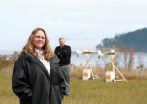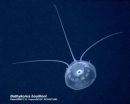(Press-News.org) Post-doctoral researchers see their role as being vital in technology transfer where scientific findings become useful to the local economy, but most have little interest in running their own business once their research fellowship ends. That's the surprising finding of a study published in the International Journal of Knowledge-Based Development.
Edmund Zolnik, a public policy specialist at the George Mason University, in Arlington, Virginia, has surveyed postdoctoral fellows in the US National Capital Region. He found that most saw technology transfer as an important part of research. However, only a few were actively preparing for self-employment and of those initial wealth was a distinguishing factor. Zolnik suggests that educational courses and programs should be emphasized that give postdoctoral fellows insights into entrepreneurial career tracks and offer them the option to be mentored early in their transition from apprentice to entrepreneur.
The Bayh-Dole Act of 1980 was the first spur to encouraging the flow of technology from national laboratories and universities into the commercial sector but 30 years later, the number of spin-offs from laboratories remains lower than expected despite the tens of billions of dollars that are invested each year in research by the federal government. Zolnik suggests that more recent empirical evidence does suggest that technology transfer from national laboratories has improved but there is still a considerable lag.
The primary focus of studies as to why there is such a lag has until now focused on what technology is transferred rather than how and by whom it is transferred from the academic to the commercial world.
Zolnik explains that as the home to many national laboratories and universities at the forefront of scientific advancements, a study of "postdocs" and their impact on technology transfer in the National Capital Region could provide useful insights into what is preventing the commercialization of research.
INFORMATION:
"The role of postdoctoral fellows in technology transfer: evidence from the National Capital Region of the USA" in Int. J. Knowledge-Based Development, 2010, 1, 158-175
Technology transfer and postdoc entrepreneurs
2010-10-05
ELSE PRESS RELEASES FROM THIS DATE:
Mechanism involved in addictions and some forms of obesity discovered in U of A lab
2010-10-05
A researcher from the Faculty of Medicine & Dentistry at the University of Alberta has discovered a mechanism underlying some forms of obesity and addictions which could lead to a treatment for both diseases.
When a hungry animal finds food in the wild, it is a rewarding stimulus for the animal and is recognized by the brain by the release of the chemical messenger dopamine. Because narcotics such as cocaine, heroin and amphetamines, and even tasty and highly-caloric foods also cause the release of dopamine and therefore make people feel rewarded, it's clear that dopamine ...
Using cassava to address vitamin A deficiency
2010-10-05
The roots of cassava (Manihot esculenta) serve as the primary source of carbohydrates in the diets of people in many arid regions of the world, including more than 250 million people in sub-Saharan Africa. Unfortunately the roots of commercial cassava cultivars are quite low in micronutrients, and micronutrient deficiencies are widespread in these regions. In addition to programs designed to deliver vitamin supplements, there has been considerable effort aimed at biofortification; that is, increasing the amounts of available micronutrients in staple crops such as cassava. ...
John Theurer Cancer Center to present innovative research at 2 surgical meetings
2010-10-05
HACKENSACK, N.J. (October 4, 2010) — James C. Wittig, M.D. and colleagues will conduct a total of eight research presentations at the upcoming 96th Annual Clinical Congress of the American College of Surgeons and the 65th Annual Meeting of the American Society for Surgery of the Hand. Dr. Wittig, an orthopedic oncologist with extensive experience in performing limb-sparing surgeries, is Chief of the Division of Skin and Sarcoma Cancer of the John Theurer Cancer Center at Hackensack University Medical Center.
The presentations will focus on unique surgical techniques ...
First-of-its-kind study finds alarming increase in flow of water into oceans
2010-10-05
Irvine, Calif. — Freshwater is flowing into Earth's oceans in greater amounts every year, a team of researchers has found, thanks to more frequent and extreme storms linked to global warming. All told, 18 percent more water fed into the world's oceans from rivers and melting polar ice sheets in 2006 than in 1994, with an average annual rise of 1.5 percent.
"That might not sound like much – 1.5 percent a year – but after a few decades, it's huge," said Jay Famiglietti, UC Irvine Earth system science professor and principal investigator on the study, which will be published ...
Montana State team finds rare oasis of life on floor of Yellowstone Lake
2010-10-05
BOZEMAN, Mont. -- Montana State University researchers have discovered a rare oasis of life in the midst of hundreds of geothermal vents at the bottom of Yellowstone Lake.
A colony of moss, worms and various forms of shrimp flourishes in an area where the water is inky black, about 90 degrees Fahrenheit, and a cauldron of nutrients, gases and poisons, the researchers reported in the September issue of Geobiology.
The vent is close to 100 feet below the surface of Yellowstone Lake and a third of a mile offshore in the West Thumb region. The worms and shrimp live among ...
Mayo Clinic takes the lead in clinical research data management
2010-10-05
ROCHESTER, Minn. -- Mayo Clinic is making it easier for industry sponsors and investigators at sites across the country to collaborate with Mayo on complex and groundbreaking research studies and clinical trials.
In a move aimed at optimizing accuracy, speed and efficiency in clinical research, Mayo Clinic has implemented a front-line system of technology for electronic data capture and management, according to Gloria Petersen, Ph.D., Mayo Clinic associate dean for research informatics. "Mayo's Clinical Trials Management System (CTMS) will eliminate the duplication, delays ...
The sky is falling (less) onto Puget Sound
2010-10-05
SEQUIM, Wash. – Most toxic pollution falling onto Puget Sound's waters has decreased – some by as much as 99 percent – below earlier estimates, according to a region-wide study. Despite the overall decline, the study found that industrial areas like Tacoma still have the Puget's Sound's highest air-deposited contamination levels.
The study, by researchers at the Department of Energy's Pacific Northwest National Laboratory and Texas A&M University at Galveston, found the amount of trace metals like arsenic, lead and copper falling onto the Tacoma region have decreased significantly ...
Powerful supercomputer peers into the origin of life
2010-10-05
OAK RIDGE, Tenn., Oct. 4, 2010 -- Supercomputer simulations at the Department of Energy's Oak Ridge National Laboratory are helping scientists unravel how nucleic acids could have contributed to the origins of life.
A research team led by Jeremy Smith, who directs ORNL's Center for Molecular Biophysics and holds a Governor's Chair at University of Tennessee, used molecular dynamics simulation to probe an organic chemical reaction that may have been important in the evolution of ribonucleic acids, or RNA, into early life forms.
Certain types of RNA called ribozymes ...
Discovery of a cell that suppresses the immune system
2010-10-05
Researchers at the Dana-Farber Cancer Institute in Boston have identified a new type of cell in mice that dampens the immune system and protects the animal's own cells from immune system attack.
This "suppressor" cell reduces the production of harmful antibodies that can drive lupus and other autoimmune diseases in which the immune system mistakenly turns on otherwise healthy organs and tissues.
The discovery, published in the September 16 issue of Nature (H Kim, et al.; Vol 467 in Letters), resulted from Lupus Research Institute funding to Harvey Cantor, MD, and ...
Census of Marine Life celebrates 'decade of discovery'
2010-10-05
Fairbanks, Alaska—The Census of Marine Life, a ten-year initiative to describe the distribution and diversity of ocean life, draws to a close today with a celebration, symposium and press conference in London. At the press conference, scientists revealed the results of the census, including the discovery of new species, new patterns of biodiversity and more. Scientists at the University of Alaska Fairbanks have played a major role in what the census calls its "decade of discovery."
UAF scientists have led two multi-year projects as part of the census. Both projects—the ...


